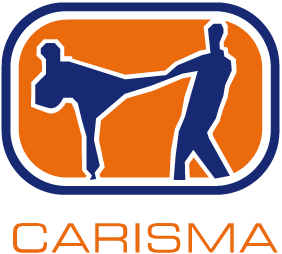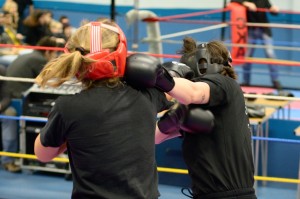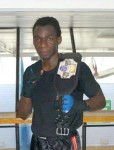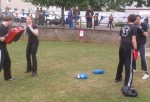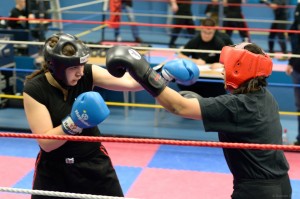The fourth CARISMA Town vs. Gown that took place yesterday at the North Cambridge Academy Sports Centre and it was, once more, a great success. It surely exceeded my own expectations as well as the ones of the people that took part to it, among fighters, organisers or spectators.
Once more the simple idea of offering the possibility for beginners and first timers to experience fighting in the ring while in a friendly environment proved to be a winning one. Numbers speak by themselves:
- Over 80 people watching and supporting
- A great team of organisers and helpers that ensured a smooth running of the event
- 28 athletes that delivered 14 top great fights (one demo between my 10 years old daughter and myself) and a surely entertaining show: please notice that 15 of them were at their first fighting experience and 9 of them started training kickboxing less than 6 months ago, with no previous experience in martial arts!
I did a lot of thinking during the last 24 hours, between the amazing rush to get everything done on time and last night when I was as tired as if I took part in every single bout and yet I could not sleep because of the adrenaline released… Here are a few random considerations about the whole event:
- Although each fighter was a student of mine I was surprised about how competitive I felt for the person I was coaching: funny enough several times I found myself giving suggestions to the other fighter as well;
- One of the greatest achievements of the whole day was having no accidents;
- The role of a coach is key for the good result of a fight because it offers an extra pair of eyes with a much broader vision as well as a fairly detached view of the fight, not (too much) affected by adrenaline and other chemicals;
- At the same time the role of the coach is highly facilitated by a fighter that can listen and simply put in practice the strategies suggested by the coach;
- Learning how to fight is part of learning kickboxing. We usually invite people to sparring classes as soon as they are fit for it. Techniques must be applied in practice in a dynamic environment where your partner / opponent is no longer collaborating and helping you. The next step is fighting in a competition, even a friendly one like this one brings you to the next level, fighting to win or be beaten; lots of emotions get involved, some people can manage them well while for other it is just overwhelming;
- Managing energy across the fight is a skill to be learnt and put in practice. Many of yesterday’s fighters are regularly attending to sparring classes where every Monday or Saturday we run 12-15 rounds of 2 minutes: nonetheless we saw energy simply running out for a few people. This was definitely not due to lack of fitness but the emotional involvement in the fight that is draining up all energies;
- Behind a great organisation there is always a great management team: all instructors of CARISMA yesterday demonstrated this by ensuring the whole event running perfectly and covering all roles and tasks that were required.
I would like to thank, personally and on behalf of a very successful Town vs. Gown 2014, in random order:
- Judging and refereeing: Luca, Jarek, James
- Assistance and supervision on filming and audio: Georgios
- Photography: Duncan
- Coaching: Phil, Georgios
- Door: Trixi and Mila
- Round boards girl (can’t think of a better definition at the moment): Ekaterina
- Fighters: Wu, Cindy, Kaya, Beth, Rachel, Alexey, Felix, Ryan, Lirane, Max, Cenan, Mark, Jethro, Anna G., Theo, Chris, Dominik, Tim, Hugo, Matt, Anna L., Navy, Francesca, Giulia, Konstantin, Ollie
Results, pictures and videos of the show will be available as the various people involved will be in the position to supply them: just keep following the TG2014 tag on this blog for any further development.
If you were there I would like to know your impressions: please leave a comment to this post.
